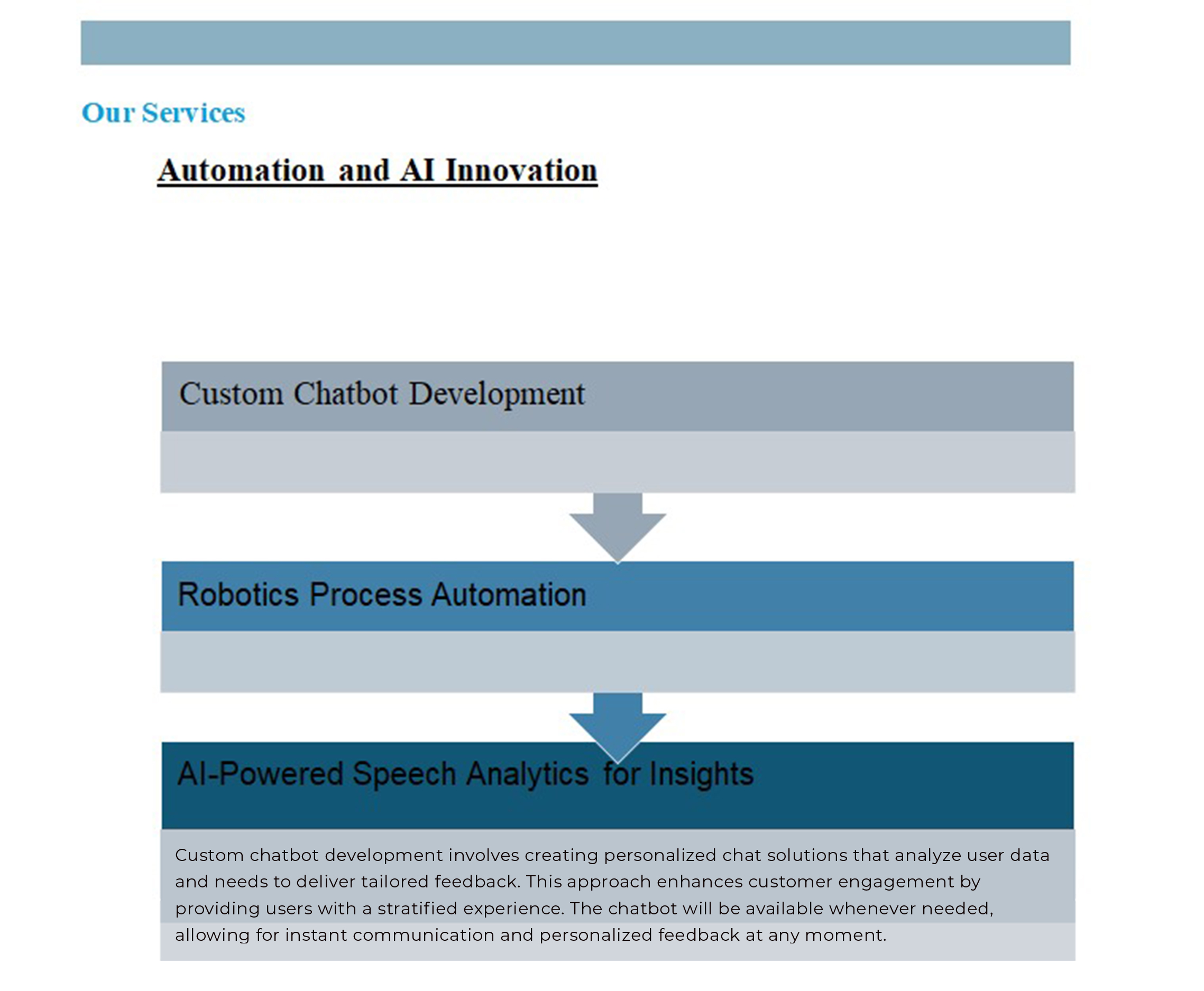-
E-mail
contact@defrilex-ls.com
-
Requesting a Call:
+1 305 845 7271
-
UNITED STATES
16192 Coastal Highway Lewes, DE 19958

NLP is the backbone of any chatbot, enabling it to understand and interpret user inputs. Key NLP techniques include text preprocessing, intent recognition, entity extraction, and sentiment analysis. A robust NLP engine should handle variations in language such as misspellings, abbreviations, and slang ensuring smooth communication with users.
Effective conversational design is critical for creating engaging and intuitive chatbot experiences. It involves defining the chatbot's personality, tone, language, and the flow of interactions. The design should align with the target audience, the chatbot’s purpose, and the desired user experience to ensure meaningful and efficient conversations.
To provide accurate and relevant responses, chatbots require access to up-to-date information from various sources, such as databases, APIs, and external knowledge bases. A well-maintained knowledge base ensures that the chatbot delivers precise answers, improving user satisfaction and trust.
Machine learning helps chatbots continually improve their natural language understanding and response generation. By training on annotated datasets of user inputs and responses, chatbots can refine their performance over time. Regular monitoring and fine-tuning are essential for adapting to new user behaviors and enhancing overall efficiency.
A seamless conversational interface is crucial for user adoption. Whether it's through a website, messaging platform, or voice assistant, the interface should be intuitive and accessible. Integrating the chatbot with existing systems and platforms ensures it functions seamlessly within the user's preferred environment.
Rigorous testing such as user acceptance testing and performance evaluation is vital for ensuring the chatbot’s reliability and effectiveness. Gathering user feedback and continuously monitoring performance helps identify areas for improvement, ensuring the chatbot evolves and meets user needs.
Robotic Process Automation (RPA) is a technology that automates repetitive, rule-based tasks typically performed by humans. Using software robots (bots), RPA mimics human actions to perform tasks across various applications without human intervention. It enhances efficiency, reduces errors, and frees up employees to focus on higher-value activities.
